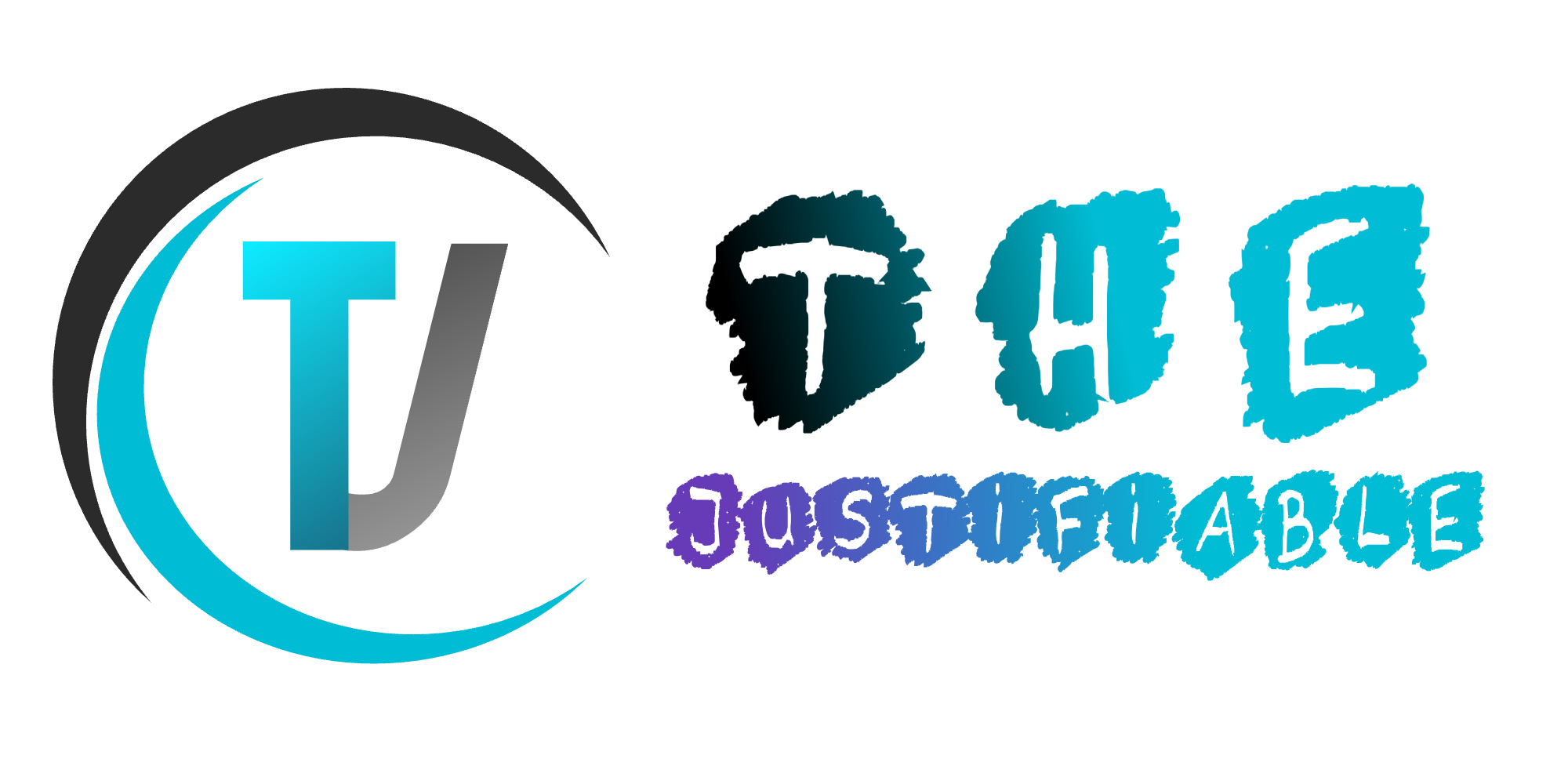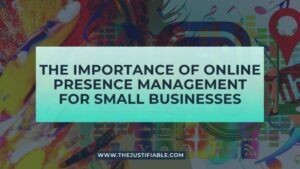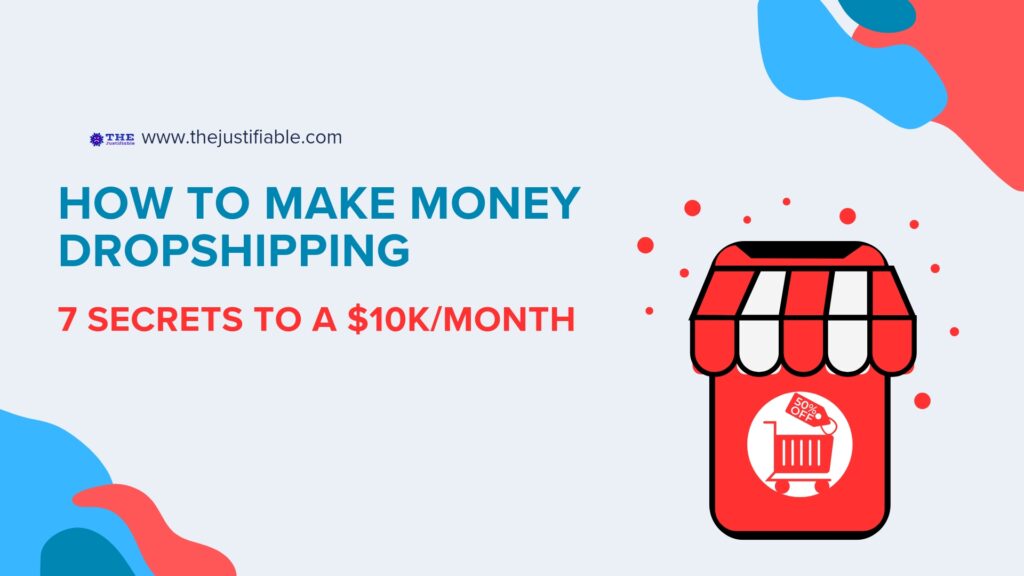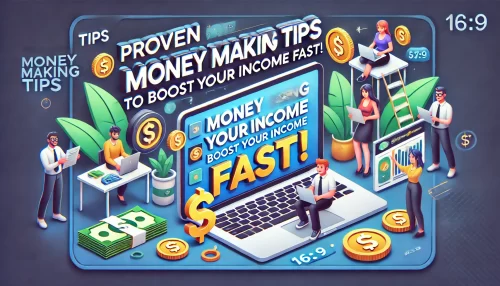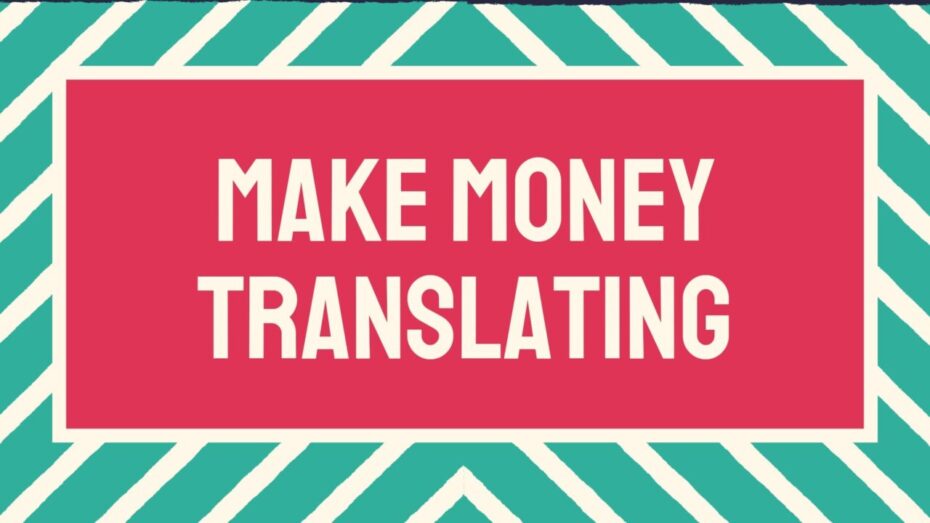Table of Contents
Setting up a blog might sound exciting, but how do you actually turn it into a profit-making machine instead of just another online diary? Where do you start, what steps should you follow, and how can you avoid wasting time on things that don’t matter?
In this guide, I’ll walk you through setting up a blog step by step so you can focus on what truly drives results—growing your audience and making money.
Choosing A Profitable Blog Niche From The Start
Before you dive into designing logos or buying hosting, the most important decision is your blog niche. Picking the wrong niche can leave you writing endlessly without profit, while the right one can open the door to sustainable income and growth.
Validate Your Blog Niche With Market Research
I always recommend treating your blog niche decision like a business investment. Instead of going with “what feels right,” take time to validate demand. Here’s how you can test a niche quickly:
- Search Volume Checks: Head to a free tool like Google Keyword Planner. Type in a few phrases related to your niche and check if people are actively searching for them. If the average monthly searches are in the thousands, that’s a green flag.
- Trend Tracking: Plug keywords into Google Trends. If interest has been steadily climbing or at least stable over the past five years, that’s much safer than a niche spiking once and dying out.
- Community Validation: Visit Reddit groups, Facebook communities, or niche forums. If people are asking lots of questions, that means there’s a hungry audience looking for solutions.
I believe this step is where most new bloggers slip up—they assume their passion is enough. Passion helps with consistency, but validation ensures your blog has an audience that will actually pay attention and, eventually, spend money.
Identify Evergreen Topics That Stay Relevant Long-Term
Not all niches are created equal. Some are fleeting (think fidget spinners), while others never go out of style. Evergreen topics keep pulling in readers year after year.
Examples of evergreen niches:
- Health and wellness (fitness, nutrition, stress management)
- Personal finance (saving money, investing, side hustles)
- Technology (software guides, productivity tools)
- Career growth (resume tips, freelancing, job interview skills)
Evergreen doesn’t mean boring—it means the problems never disappear.
For example, people will always want to “lose weight safely” or “improve productivity at work.” If you center your blog around timeless questions, your posts will keep generating traffic and revenue without constant reinvention.
From what I’ve seen, the best strategy is to balance evergreen content with a few trending topics. This way you capture long-term stability and short-term traffic spikes.
Narrow Down To A Target Audience You Can Monetize
The broad “fitness” niche is huge. But “fitness for busy parents” is specific. That’s the difference between drowning in competition and carving out your profitable corner of the internet.
Here’s how to narrow your target audience:
- Demographics: Who are you writing for? (Age, job, lifestyle, etc.)
- Pain Points: What’s their biggest struggle? (No time, no knowledge, lack of money, etc.)
- Monetization Paths: Can you recommend products, courses, or services they’d pay for?
Let me break it down with a scenario: Imagine you choose the broad niche of “personal finance.” Hard to stand out, right? But what if you focus on “personal finance for millennials with student debt”? Suddenly, you can create content like:
- Best budgeting apps for student loan repayment
- How to refinance loans in your 20s
- Step-by-step savings plans for first-time renters
This sharpens your niche, reduces competition, and creates direct monetization opportunities (like affiliate partnerships with finance apps).
Picking The Right Blogging Platform And Domain
Once you know your niche, the next step is laying the technical foundation. This is where a lot of people get stuck, but it doesn’t have to be complicated if you focus on proven platforms and smart choices.
Why WordPress.org Stands Out For Monetization
I always suggest WordPress.org for serious bloggers aiming to earn money. Here’s why:
- Ownership: Unlike free platforms (Blogger, Wix, Medium), you own your site and content. No risk of a platform shutting you down.
- Flexibility: With 50,000+ plugins, you can add features like email signup forms, SEO optimization, membership sites, or e-commerce—without touching a single line of code.
- SEO Advantage: WordPress is structured to be SEO-friendly out of the box, and plugins like Rank Math give you advanced control over meta titles, sitemaps, and schema.
- Scalability: Whether you’re writing for 10 visitors or 1 million, WordPress can handle it with the right hosting setup.
I know some people get tempted by Squarespace or Wix for their drag-and-drop simplicity. They’re fine for hobby blogs, but if your goal is monetization, WordPress.org gives you the foundation for growth.
How To Choose A Domain Name That Builds Trust
Your domain name is your online storefront—it’s the first impression of your brand. A poor choice can turn visitors away before they even click. Here are my go-to guidelines:
- Keep it short and simple (under 15 characters if possible).
- Avoid numbers, hyphens, or odd spellings that confuse people.
- Make it niche-relevant but not too narrow (example: “SmartBudgeting.com” works, while “BudgetTipsFor2017.com” dies fast).
- Stick with .com if you can—it’s still the most trusted extension worldwide.
Pro tip: I like to brainstorm 10–15 domain name options, then run them through a tool like Namecheap or GoDaddy’s domain search. If my first choice is gone, I don’t stress—it often forces me to get more creative.
Hosting Providers That Support Growth And Scale
Hosting is the engine under your blog’s hood. A weak host means your site loads slowly, crashes under traffic, or worse—loses data. I suggest choosing a provider known for speed, uptime, and customer support.
Some solid hosting options:
- SiteGround: Great balance of speed, beginner-friendly dashboard, and solid customer service.
- Bluehost: Recommended for absolute beginners because it integrates directly with WordPress during setup.
- Cloudways: A bit more advanced, but excellent for scaling once traffic grows.
When comparing plans, look for features like free SSL (security certificate), daily backups, and at least 99.9% uptime. In my experience, it’s worth paying a little extra for managed WordPress hosting—it saves you headaches in the long run.
Pro tip: Don’t overthink the tech stack. I’ve seen too many beginners stall for weeks over platform or hosting choices. The real game-changer isn’t picking the “perfect” provider, but actually publishing valuable content consistently.
Designing A Blog That Builds Authority And Trust
The way your blog looks and functions says more about your credibility than most people realize. A clunky, outdated design can scare visitors off before they even read your first paragraph.
Let’s get your blog set up so it feels professional, loads quickly, and builds instant trust.
Select A Theme Optimized For Speed And SEO
Your theme is the backbone of your blog’s design. I suggest choosing a clean, lightweight WordPress theme instead of one loaded with unnecessary bells and whistles.
Heavy themes slow your site down, and speed matters more than ever—Google has confirmed that site speed affects rankings, and readers are quick to bounce if a page takes more than 3 seconds to load.
Some excellent lightweight themes I’ve used include GeneratePress and Astra. Both are flexible, SEO-friendly, and designed to keep page load times minimal. They also play nicely with page builders like Elementor if you want to customize without touching code.
Pro tip: After installing your theme, run your site through PageSpeed Insights. If the scores are poor, tweak your design early before publishing dozens of posts. Trust me, it’s much easier to fix performance now than later.
Customize Your Blog For A Professional First Impression
Once you have a theme installed, it’s time to brand your blog so it feels trustworthy. Start with your logo—it doesn’t need to be fancy. Even a clean text-based logo made in Canva works when you’re starting out.
Then move on to your color palette and typography. I recommend sticking with two or three colors max, plus easy-to-read fonts. Google Fonts has plenty of free options—avoid overly decorative fonts for body text.
Also, don’t ignore your navigation menu. Visitors should instantly find categories like “Start Here,” “About,” “Blog,” and “Contact.” A cluttered menu makes your site feel confusing and amateur.
One more detail I always advise: create a professional “About” page. Readers want to know who’s behind the blog. Share your story, your mission, and why they should trust your advice. This page often becomes one of the most visited parts of a site.
Essential Plugins That Simplify Growth And Management
WordPress is powerful because of plugins. The trick is not to overload your site with dozens of them but to install only what truly helps you grow.
Here are a few must-haves:
- Rank Math or Yoast SEO: Helps you optimize each post for search engines without needing technical expertise.
- WP Rocket or W3 Total Cache: Improves site speed through caching and performance tweaks.
- UpdraftPlus: Automatically backs up your site so you never lose content.
- MonsterInsights or Site Kit by Google: Simple dashboards for tracking Google Analytics inside WordPress.
- Akismet Anti-Spam: Keeps spammy comments under control.
I suggest starting with these essentials and adding more only when you genuinely need them. Every extra plugin adds weight, so less is more here.
Creating Content That Attracts Readers And Revenue
Even with the best design, a blog without great content is like a shop with empty shelves. Your content strategy is what brings in readers, keeps them around, and eventually turns traffic into income.
Build A Content Strategy Around High-Value Keywords
Before writing anything, research what your audience is searching for. Open up a tool like Ubersuggest, type in a phrase related to your niche, and look at the keyword ideas it generates. Prioritize ones with high search volume but moderate competition.
Here’s how I structure a basic content plan:
- Pillar Posts: Big, comprehensive guides that target broad keywords (e.g., “How to Start Budgeting”).
- Supporting Posts: Smaller, focused articles linking back to your pillars (e.g., “Best Budget Apps for Beginners”).
- Answer Posts: Quick posts targeting specific questions (e.g., “Is Mint or YNAB better for budgeting?”).
This creates an interlinked content ecosystem that improves SEO and keeps readers exploring your blog.
Write Blog Posts That Rank And Convert Readers
Ranking is half the battle—your post also needs to keep people engaged. I suggest a simple writing framework:
- Hook them early: Start with a relatable problem or question.
- Deliver real value: Break down solutions step by step.
- Add visuals: Screenshots, charts, or even a simple table can make complex info easier to digest.
- Call to action: Guide readers to the next step, whether it’s joining your email list or checking out a recommended product.
I’ve noticed that posts with clear formatting—short paragraphs, bullet lists, and subheadings— perform better both with readers and search engines. People skim, so make your content easy to scan.
Repurpose Content For Email, Social Media, And SEO Boost
One blog post doesn’t have to stop at your website. Repurposing multiplies its reach:
- Turn key points into a Twitter thread.
- Convert a list post into a LinkedIn carousel.
- Summarize the post into a newsletter email.
- Record a quick video version for Instagram or TikTok.
For example, I once took a 2,000-word article on “side hustles” and split it into five short YouTube scripts. That one piece of content brought in traffic across multiple platforms, and all roads led back to the blog.
Repurposing keeps your content working for you instead of just sitting on your site.
Building An Audience With Smart Promotion
If content is your fuel, promotion is the spark that makes it visible. Publishing alone won’t bring readers—you need a plan to get your blog in front of the right people.
Use SEO To Drive Long-Term Organic Traffic
SEO is a long game, but it pays off with compounding results. Start with on-page basics:
- Use your target keyword in the title, meta description, and first 100 words.
- Add internal links between related posts.
- Optimize images with descriptive alt text.
- Focus on getting backlinks by guest posting or collaborating with other bloggers.
I’ve seen beginner blogs climb from zero to thousands of monthly visitors just by consistently applying these fundamentals. The key is patience—SEO takes months, not days.
Leverage Social Media Platforms For Faster Growth
While SEO builds slowly, social media can drive quicker bursts of traffic. The trick is not to spread yourself too thin. Pick one or two platforms where your audience actually hangs out.
For example:
- Pinterest works wonders for niches like food, home decor, or lifestyle.
- Twitter/X is better for personal branding, tech, and business content.
- Instagram/TikTok shine if your niche is visual or lifestyle-driven.
Post consistently, but always lead people back to your blog. Social media is the party, your blog is the home base.
Grow An Email List To Keep Readers Coming Back
If I had to pick one strategy that turns casual readers into loyal fans, it’s email marketing. Unlike social media, you own your list—it’s not subject to algorithm changes.
Here’s a simple way to start:
- Install a plugin like MailPoet or connect a service like Aweber.
- Offer a lead magnet (a free checklist, mini-guide, or template).
- Place signup forms in key spots: homepage, blog sidebar, and at the end of posts.
Once people join, nurture them with weekly tips, personal insights, and links to your best content. Over time, this list becomes your most profitable traffic source.
Pro tip: Don’t chase every promotion tactic at once. I advise picking one long-term strategy (SEO) and one short-term driver (like Pinterest or email). Master those before adding more, or you risk spreading your energy too thin.
Monetizing Your Blog With Proven Strategies
Once your blog has traffic and trust, it’s time to turn those readers into revenue. There isn’t just one way to monetize—different strategies work for different niches. Let’s break down the most reliable options.
Make Money Through Affiliate Marketing Partnerships
Affiliate marketing is often the first monetization method bloggers try because it’s straightforward. You recommend a product, use a special link, and earn a commission when someone buys.
Here’s how to do it right:
- Pick relevant products. If you blog about fitness, promote supplements, workout apps, or home gym gear—not random kitchen gadgets.
- Use networks. Platforms like Awin, Impact, or Flexoffers connect you with thousands of programs.
- Weave links naturally. Instead of shoving banners everywhere, place links inside helpful guides. For example: “When I tested budgeting apps, YNAB stood out because…” and then link your affiliate code.
I advise creating at least one “best tools/resources” page. Think of it as your blog’s storefront—it’s where you collect your most trusted recommendations in one place.
Sell Digital Products Or Online Courses Directly
If you want full control over income, creating your own product is powerful. Digital goods scale infinitely—you make them once, and they keep selling.
Options include:
- Ebooks or downloadable guides
- Templates or planners
- Online courses or workshops
- Membership sites with exclusive content
For instance, from your WordPress dashboard you can install WooCommerce to sell directly on your site. If you prefer hosting courses, platforms like Teachable or LearnWorlds handle the tech side.
I’ve seen even small blogs earn consistent income with a $29 workbook or $97 course because readers trust the blogger’s perspective. The secret is solving one specific problem really well.
Offer Sponsored Posts Or Advertising Opportunities
When your traffic grows, brands may want to tap into your audience. Sponsored posts can be a steady income stream—companies pay you to write about their product, review it, or feature it in a guide.
To get started:
- Add a “Work With Me” page on your site.
- Outline what you offer (sponsored posts, banner ads, collaborations).
- Share your traffic stats and audience demographics.
If you’d rather automate, join networks like Monetag once you hit their traffic minimums. They handle ad placement and pay you monthly.
One word of advice: don’t sell your soul. Readers can tell when content is forced. I always recommend working only with brands you’d genuinely use.
Tracking Blog Performance And Scaling Income
Making money is great, but scaling it requires knowing what works, what doesn’t, and where to double down.
Use Analytics Tools To Measure What Works Best
Without data, you’re just guessing. I recommend setting up Google Analytics as soon as your blog launches. Inside your dashboard, you can track:
- Top-performing posts
- Traffic sources (Google, social media, email)
- User behavior (time on site, bounce rate)
Combine that with Google Search Console to see which keywords bring you traffic. I like checking monthly which posts bring the most visitors—then I focus my effort on expanding those topics.
Optimize Old Content To Increase Ongoing Revenue
New bloggers often obsess over pumping out fresh content, but your old posts are like buried treasure. Updating them regularly can double or triple traffic.
Here’s my personal update routine:
- Open Google Analytics → Behavior → Site Content → All Pages.
- Sort by top traffic posts.
- Update stats, refresh outdated screenshots, and add new internal links.
- Re-optimize with better keywords in the headings.
I’ve had posts jump from page 2 to page 1 of Google simply from refreshing the content and re-publishing. It’s low-effort but high-return.
Automate Tasks And Outsource To Free Up Time
At some point, your blog will outgrow what you can handle alone. Instead of burning out, automate and delegate.
Tools I suggest:
- Buffer or Tailwind: Schedule social posts in batches.
- Omnisend Automations: Send email sequences without manual effort.
- Canva Pro: Save design templates so you’re not remaking graphics every time.
For outsourcing, start small. Hire a VA for repetitive tasks like formatting posts, or a freelance writer for content expansion. Freeing up even 5 hours a week lets you focus on strategy and growth.
Expert Tips For Long-Term Blogging Success
Blogging isn’t about overnight wins—it’s about showing up consistently until momentum takes over. These final tips will help you stay grounded and keep growing.
Treat Your Blog Like A Business, Not A Hobby
If you want profit, approach your blog like a business. That means setting goals, creating a publishing schedule, and reinvesting earnings into tools or courses.
I suggest starting with simple quarterly goals, like “publish 12 posts” or “grow email list by 500.” Tracking these milestones keeps you accountable.
Stay Consistent Even When Results Feel Slow
The hardest part of blogging is the beginning. For months, you may write into the void with little traffic. That’s normal. The bloggers who succeed are the ones who keep showing up when the numbers are small.
Here’s a mindset shift that helped me: instead of focusing on “thousands of visitors,” focus on writing to help one reader. Over time, that compounds into thousands anyway.
Keep Learning New Skills To Stay Ahead Of Competitors
The blogging world evolves fast—AI tools, new social platforms, shifting SEO rules. The best defense is constant learning.
- Take a short online course once a year.
- Follow a few trusted industry newsletters.
- Test new tools before your competitors do.
For example, I started experimenting with short-form video early. Now those videos not only drive traffic but also give me an edge in building trust with readers.
Pro tip: Blogging success doesn’t come from doing everything at once—it comes from layering strategies over time. Nail your niche, create valuable content, promote smartly, and then slowly add monetization.

